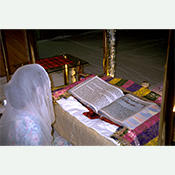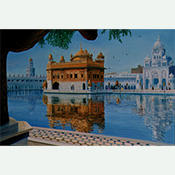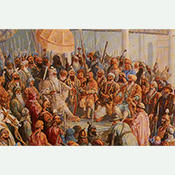Filter By Post Date
- 1998 (9)Apply 1998 filter
- 1999 (21)Apply 1999 filter
- 2000 (14)Apply 2000 filter
- 2001 (180)Apply 2001 filter
- 2002 (149)Apply 2002 filter
- 2003 (243)Apply 2003 filter
- 2004 (308)Apply 2004 filter
- 2005 (370)Apply 2005 filter
- 2006 (419)Apply 2006 filter
- 2007 (264)Apply 2007 filter
- 2008 (291)Apply 2008 filter
- 2009 (272)Apply 2009 filter
- 2010 (221)Apply 2010 filter
- 2011 (79)Apply 2011 filter
- 2012 (137)Apply 2012 filter
- 2013 (119)Apply 2013 filter
- 2014 (207)Apply 2014 filter
- 2015 (21)Apply 2015 filter
- 2016 (28)Apply 2016 filter
- 2017 (11)Apply 2017 filter
- 2018 (11)Apply 2018 filter
- 2019 (135)Apply 2019 filter
- 2020 (38)Apply 2020 filter
- 2021 (36)Apply 2021 filter
- 2022 (29)Apply 2022 filter
- 2023 (7)Apply 2023 filter
- 2024 (1)Apply 2024 filter
Filter By Taxonomy
Religious Tradition
- (-) Remove Sikhism filterSikhism
- Islam (606)Apply Islam filter
- Interfaith (554)Apply Interfaith filter
- Hinduism (417)Apply Hinduism filter
- Christianity (341)Apply Christianity filter
- Judaism (237)Apply Judaism filter
- Buddhism (185)Apply Buddhism filter
- Jainism (86)Apply Jainism filter
- Bahá'í (69)Apply Bahá'í filter
- Other Traditions (36)Apply Other Traditions filter
- Zoroastrianism (27)Apply Zoroastrianism filter
- Native American Traditions (21)Apply Native American Traditions filter
- Paganism (18)Apply Paganism filter
- Humanism (14)Apply Humanism filter
- Daoism (11)Apply Daoism filter
- Multifaith (11)Apply Multifaith filter
- Other Indigenous Traditions (8)Apply Other Indigenous Traditions filter
- Confucianism (6)Apply Confucianism filter
- Shintō (6)Apply Shintō filter
- Afro-Caribbean (3)Apply Afro-Caribbean filter
- New Religious Movements (2)Apply New Religious Movements filter
- Unitarian Universalism (2)Apply Unitarian Universalism filter
U.S. States
Copyright © 2024 The President and Fellows of Harvard College | Accessibility | Digital Accessibility | Report Copyright Infringement








 Since Anti-Asian sentiment was rampant in the American West, Sikhs were the victims of systematic discrimination. They were also targets of defamation and physical violence throughout the early 20th century....
Since Anti-Asian sentiment was rampant in the American West, Sikhs were the victims of systematic discrimination. They were also targets of defamation and physical violence throughout the early 20th century....